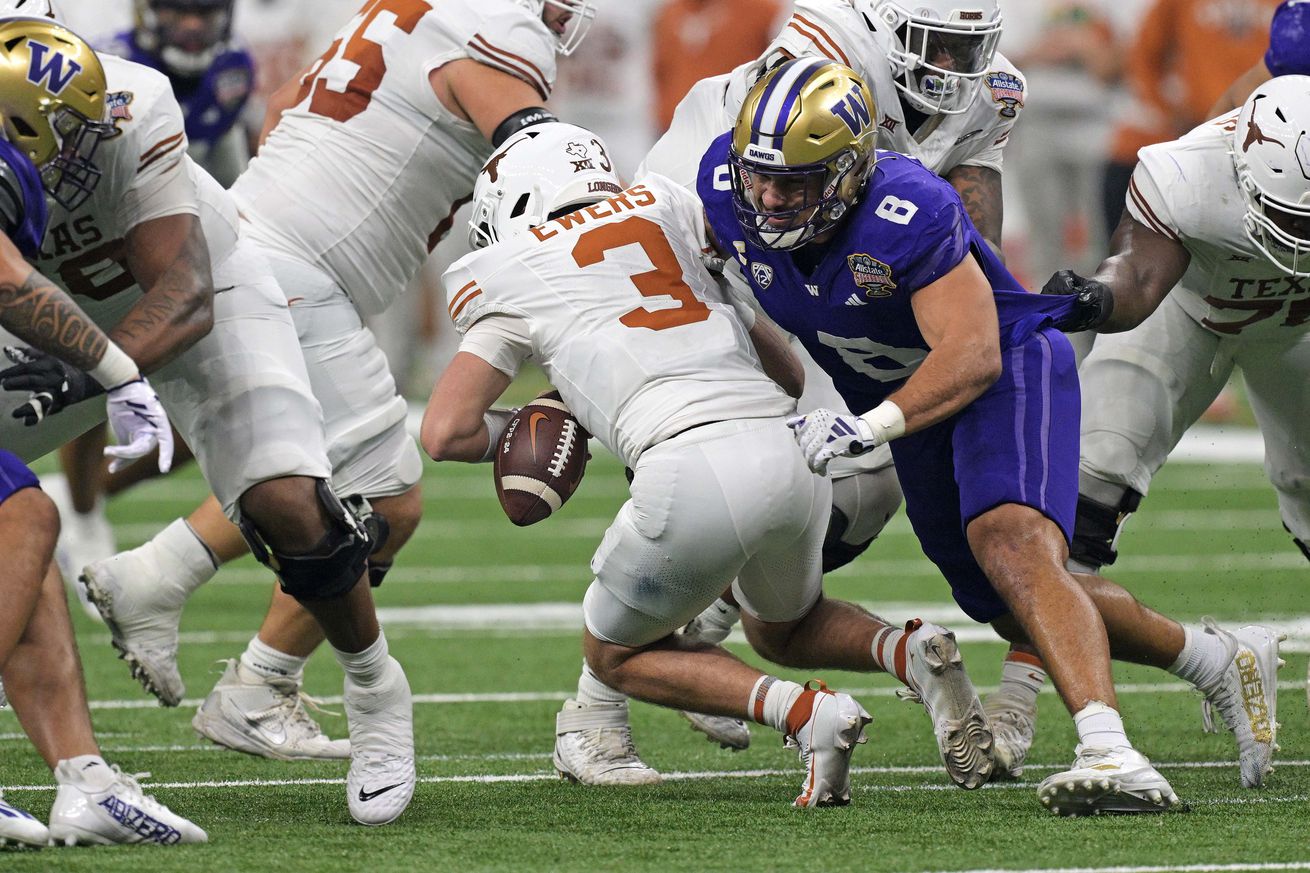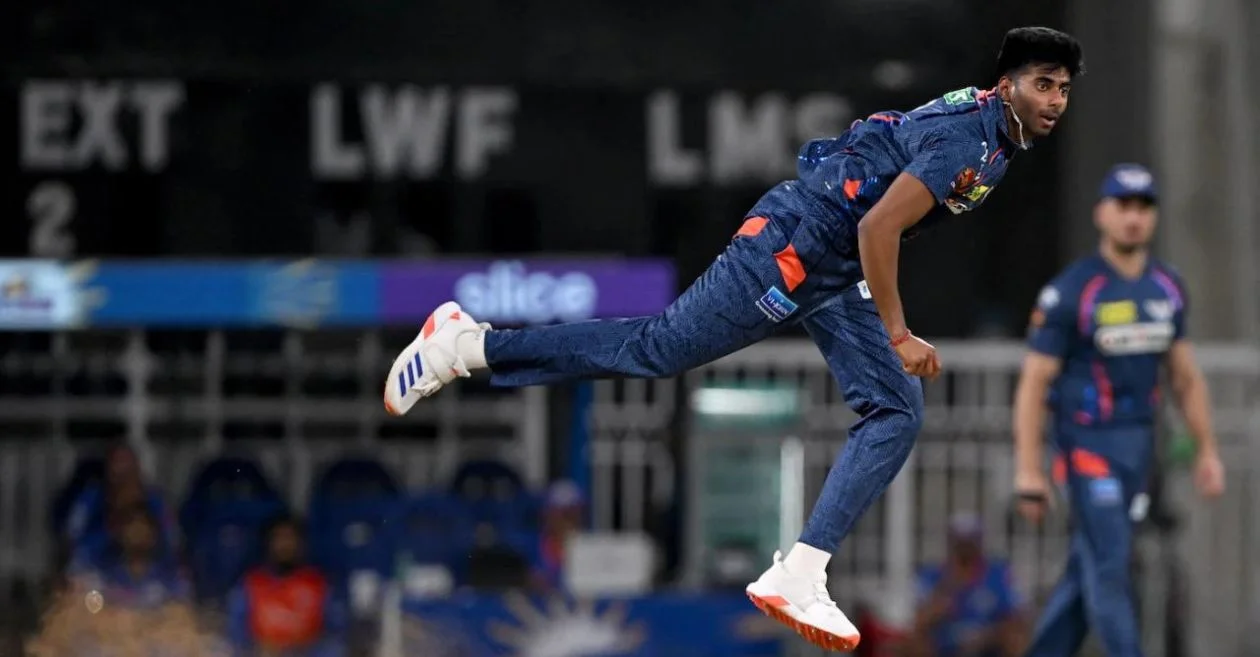
Identifying which edge rushers the Detroit Lions should be keeping an eye on during the 2024 NFL Combine.
On Sunday, the first group of NFL hopefuls showed up in Indianapolis to participate in the 2024 NFL Combine. Over the first few days, prospects will get medical exams, participate in team interviews, meet with the media, and much more. Then on Thursday (February 29), the prospects will take the stage for televised on-field Combine drills.
As part of a lead-up to the televised coverage, we have been releasing a prospect preview series, highlighting a handful of players from each position group that the Detroit Lions and their fans should be watching. So far, we have taken a look at the quarterbacks, running backs, wide receivers, tight ends, offensive tackles, interior offensive linemen, and interior defensive linemen, and in this article, we identify some of the best fits among the edge rusher group.
What skills to watch for during on-field drills
During on-field drills with edge rushers, the first thing you’re looking for is their ability to bend (ideally a 45-degree angle when turning a corner) as it is a key component to any pass rush. Beyond that trait, edge rushers also need to have balance through their rush and the ability to maintain that speed while executing pass rushing moves. Hand quickness and placement are paramount. So is eye/head location, as they should be keying on their target. The ability to convert speed to power is also vital in the Lions’ scheme, so keep an eye on how much force they generate when they make an impact with the blocking bags.
Team need
Currently, Detroit deploys two edge rushers at defensive end positions on base downs, but most also have the ability to kick inside on pass rushing downs, making room to add a third edge rusher on the field. Sometimes that third edge will be another defensive end type, while at other times it will be a linebacker, which is called the SAM in the Lions’ scheme.
Pro Bowler Aidan Hutchinson rarely leaves the field and occupies one of the defensive end spots. Opposite him has either been John Cominsky, Josh Paschal, or both when one of them kicks inside. All three are under contract in 2023, though Cominsky has a big cap hit and is at risk of potentially being a cap casualty. Romeo Okwara completed the two-deep rotation, but he is an undrafted free agent (UFA), and after taking a salary reduction last offseason, it’s unclear if he will return or look for opportunities elsewhere.
At SAM, the Lions tried several different options with little success. They opened the season with Charles Harris, but he ended the season as a healthy scratch for most games and is a UFA. James Houston was expected to take over the position but he suffered a broken leg and missed the majority of the season. Houston is an exclusive rights free agent, meaning he will most likely return to Detroit and be the favorite for the role—though he is certain to face competition.
Mitchell Agude was on the practice squad all season and returns to Detroit on a futures contract, while the Lions also made a move to sign Mathieu Betts, who was the leading sack producer in the Canadian Football League this past season.
The Lions struggled to generate a consistent pass rush opposite Hutchinson and could be looking to upgrade that position, either by adding another defensive end or a SAM pass rusher. They also need depth behind Hutchinson, meaning they could address these needs by targeting prospects with different skill sets.
Laiatu Latu, UCLA (6-foot-5, 261 pounds)
This draft class lacks an elite pass rusher but it does have very solid depth throughout the projected top-100 prospects. Dallas Turner (Alabama) and Jared Verse (Florida State) are typically projected to be the first two edge players drafted, but from a talent perspective, Latu is on par with them—his 26.2% pass rush win rate from PFF was the best in college football.
Latu still gets mocked to the Lions at the end of the first round because of potential concerns surrounding a neck injury that forced him to medically retire while at the University of Washington. After taking some time to heal, UCLA cleared him and he played there two seasons without issue. Still, his Combine medical checks figure to be the most important part of his time in Indianapolis.
Chop Robinson, Penn State (6-foot-3, 255 pounds)
Chop Robinson is quite possibly the freakiest athlete in this draft class and is expected to light up the Combine. From a purely athletic standpoint, the comparisons to former teammate Micah Parsons are lofty, as that’s a big hill to climb. Right now, Robinson is winning almost solely on his traits and does not have a ton of polish to his game, resulting in lackluster production compared to his potential. If/when it clicks though, his upside is through the roof.
Darius Robinson, Missouri (6-foot-5, 286 pounds)
Identified as a Lions-type of player by NFL Network’s Daniel Jeremiah, Darius Robinson (a Southfield native) is a power-based prospect who fits the mold of Cominsky/Paschal-type but with more arm length (nearly 35-inches) and pass rushing upside. His body type and traits will be very appealing to the Lions and will remind coaches of Cam Jordan of the Saints.
Chris Braswell, Alabama (6-foot-3, 257 pounds)
Braswell—the other Alabama pass rusher—is a very balanced prospect and performs well both pass rushing and stopping the run. He’s not flashy athletically, but he has a tremendous motor and likes to be the aggressor. Braswell was a standup edge rusher in Alabama’s four-man front and could find a home early in Detroit as a dedicated SAM linebacker while pushing for more time in base formations.
Bralen Trice, Washington (6-foot-3 1⁄2, 270 pounds)
If you’re looking for Aidan Hutchinson-lite, Trice is your guy. Not only did he play an insane 753 snaps in 2023—the most of any defensive lineman in college football per PFF—but he also led the nation in pressures each of the last two seasons, registering 70 in 2022 and 80 in 2023. As a run defender, he accounted for 21 “stops” in 2023 per PFF, which is third most of the edge rushers attending the Combine. Additionally, Trice was one of Washington’s team captains and plays with a relentless motor that never stops.
Marshawn Kneeland, Western Michigan (6-foot-3, 268 pounds)
Kneeland, a Grand Rapids native, is comfortable defending with his hand in the dirt or as a stand-up pass rusher. His speed to power game is his best trait and he hustles all over the field constantly pursuing the ball carrier. Kneeland may be the best run defending edge in this class, which will certainly resonate with the Lions’ approach. Right now, he’s more of a pass rusher than a three-down defender, but as he develops his toolbag, he has the potential to elevate his game to impact levels.
Austin Booker, Kansas (6-foot-4 1⁄2, 240 pounds)
Booker is a raw talent with an appealing frame and impressive athleticism when things click. He has a surprising amount of skills as a pass rusher and run defender, especially for a player who, for the most part, didn’t find the field at Kansas until this season. He’ll add weight and strength in the NFL, and his athleticism should remain elite, but he’s very much a lottery ticket right now because there’s a limited sample size to prove his production will be consistent and sustainable.
Jonah Elliss, Utah (6-foot-2, 243 pounds)
The son of former Detroit Lions defensive end Luther Elliss and brother of Saints linebacker Kaden Elliss, Jonah has strong NFL bloodlines and a history with the organization. He’s undersized for the edge position, which could force him to begin his career as a stand-up pass rusher, but he has a ton of traits that will appeal to NFL teams. He explodes off the line-of-scrimmage and has a variety of pass rush moves at his disposal, allowing him to attack in a variety of ways. He has the potential to challenge for a starting SAM role in the Lions’ scheme and should be a plus contributor on special teams.
Javon Solomon, Troy (6-foot-1, 247 pounds)
Speaking of SAM linebackers, Solomon looks like he is built for the role. Like with James Houston—who is almost identical in size—Solomon will need to be a stand-up pass rusher in order to give him distance from offensive tackles and allow his athleticism to unfold. His ability to press the edge with speed and then hit tackles with counter moves is fantastic, while his ability to contribute against the run— plus some zone coverage experience—will give him opportunities to find the field early in his career.
Jaylen Harrell, Michigan (6-foot-3 1⁄2, 251 pounds)
Harrell is an above-average pass rusher with solid instincts and reactionary skills. At Michigan, Harrall was limited to mainly pass rushing roles and was moved around to highlight his best traits, as opposed to sticking at defensive end, where he lacks the strength to consistently set the edge. His ability to drop into zone coverages helps justify why he could succeed in a SAM-like role in the NFL, but he’ll need to add strength to play more than a pass rushing role early in his career.
















You must be logged in to post a comment Login